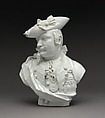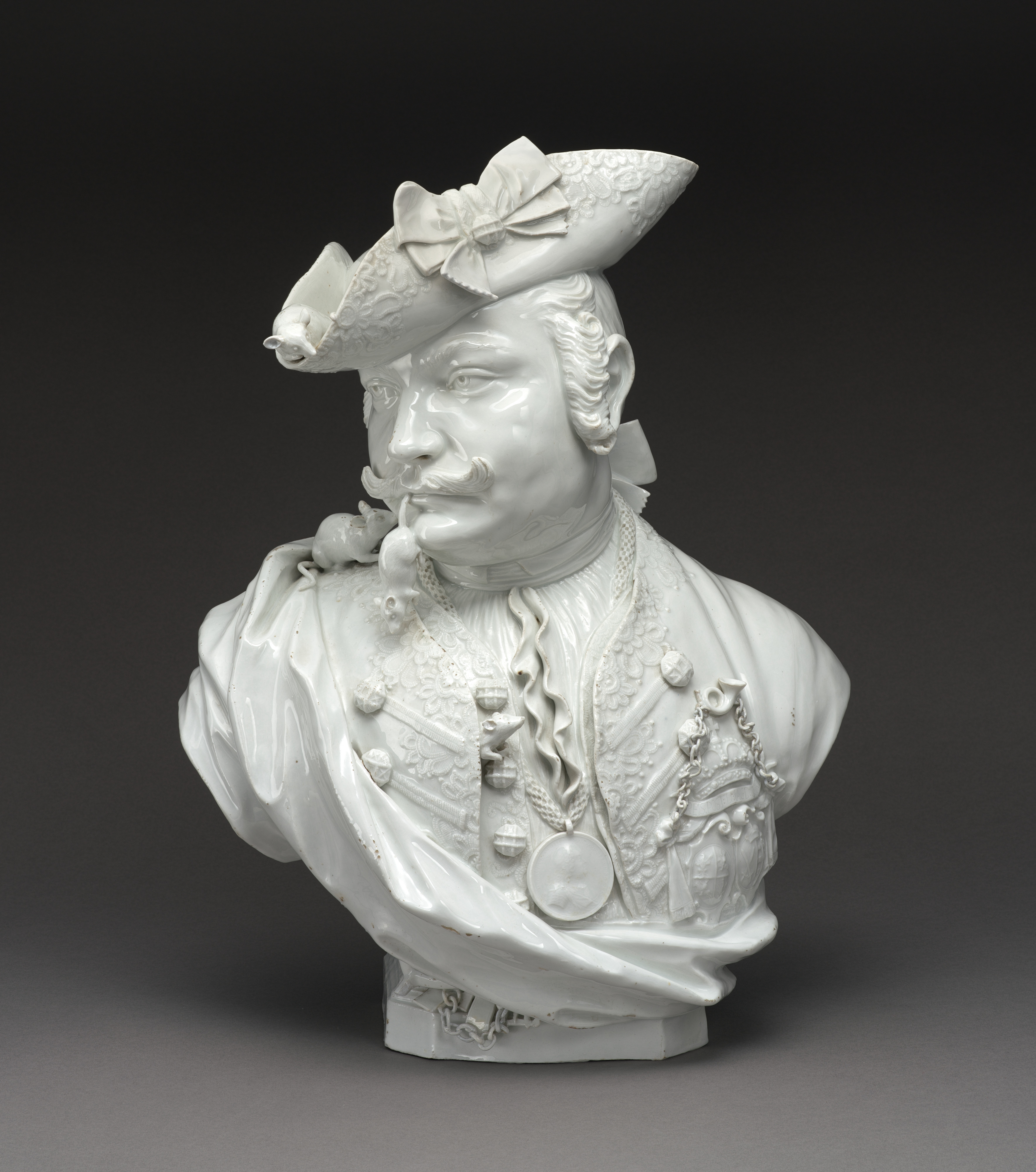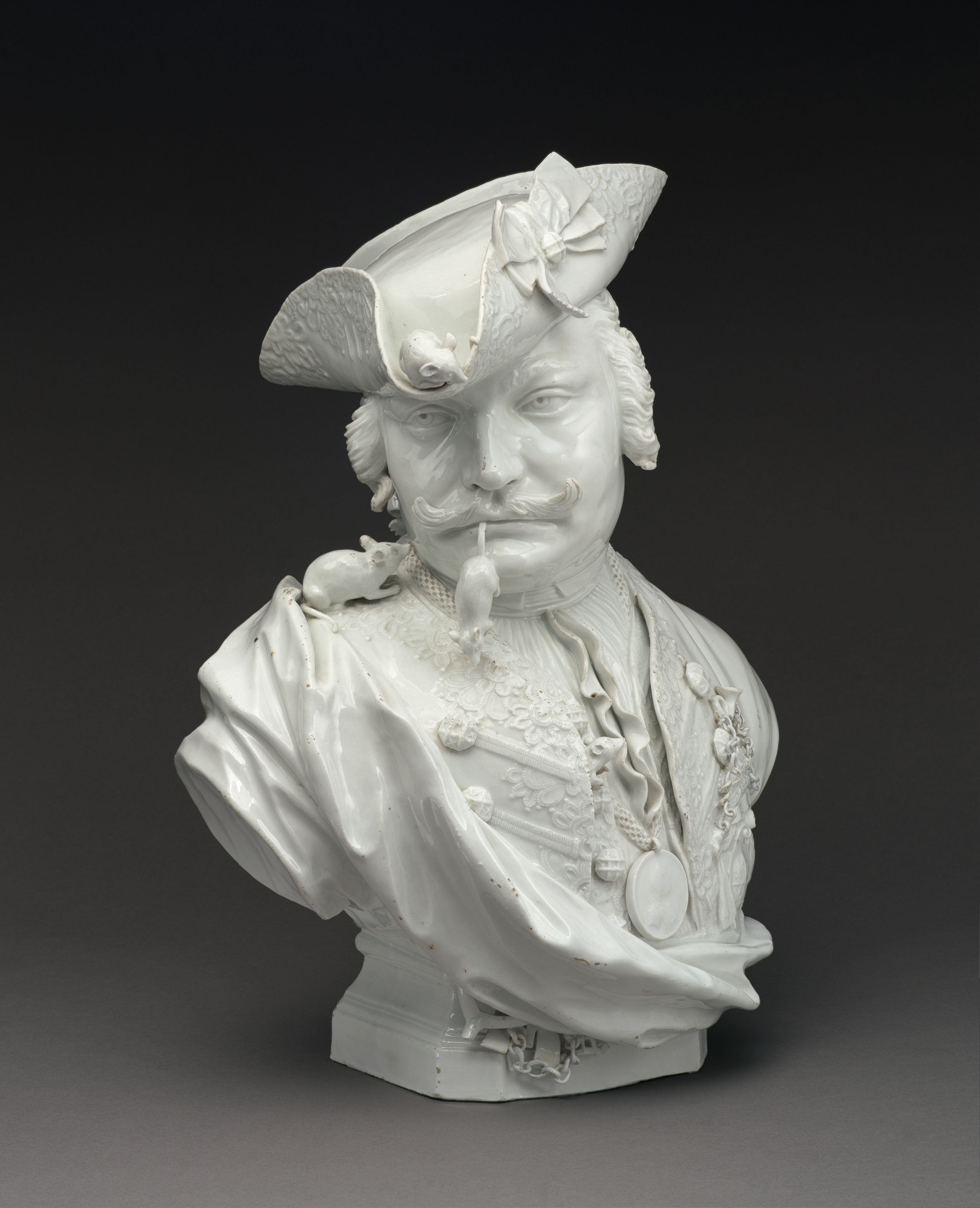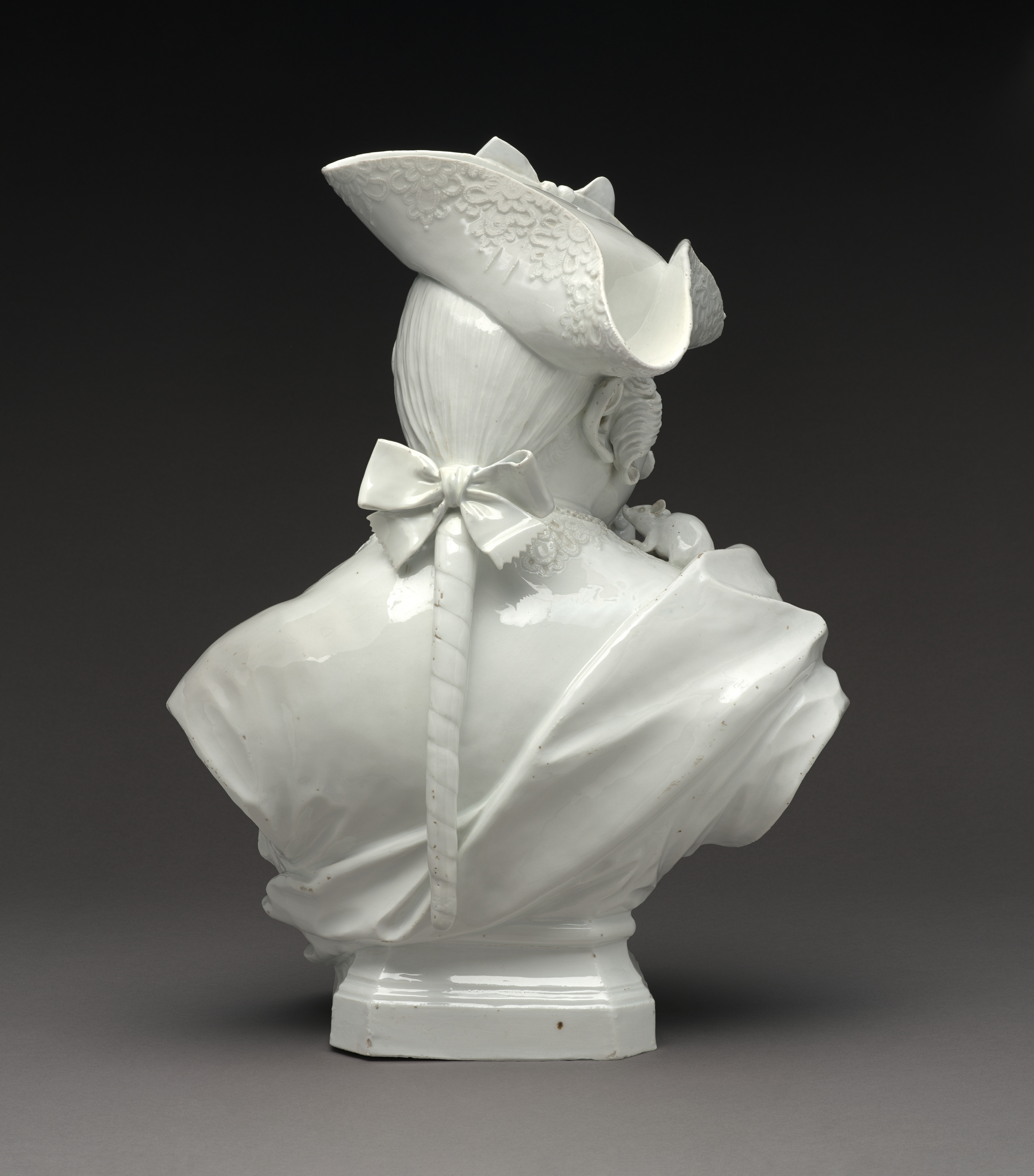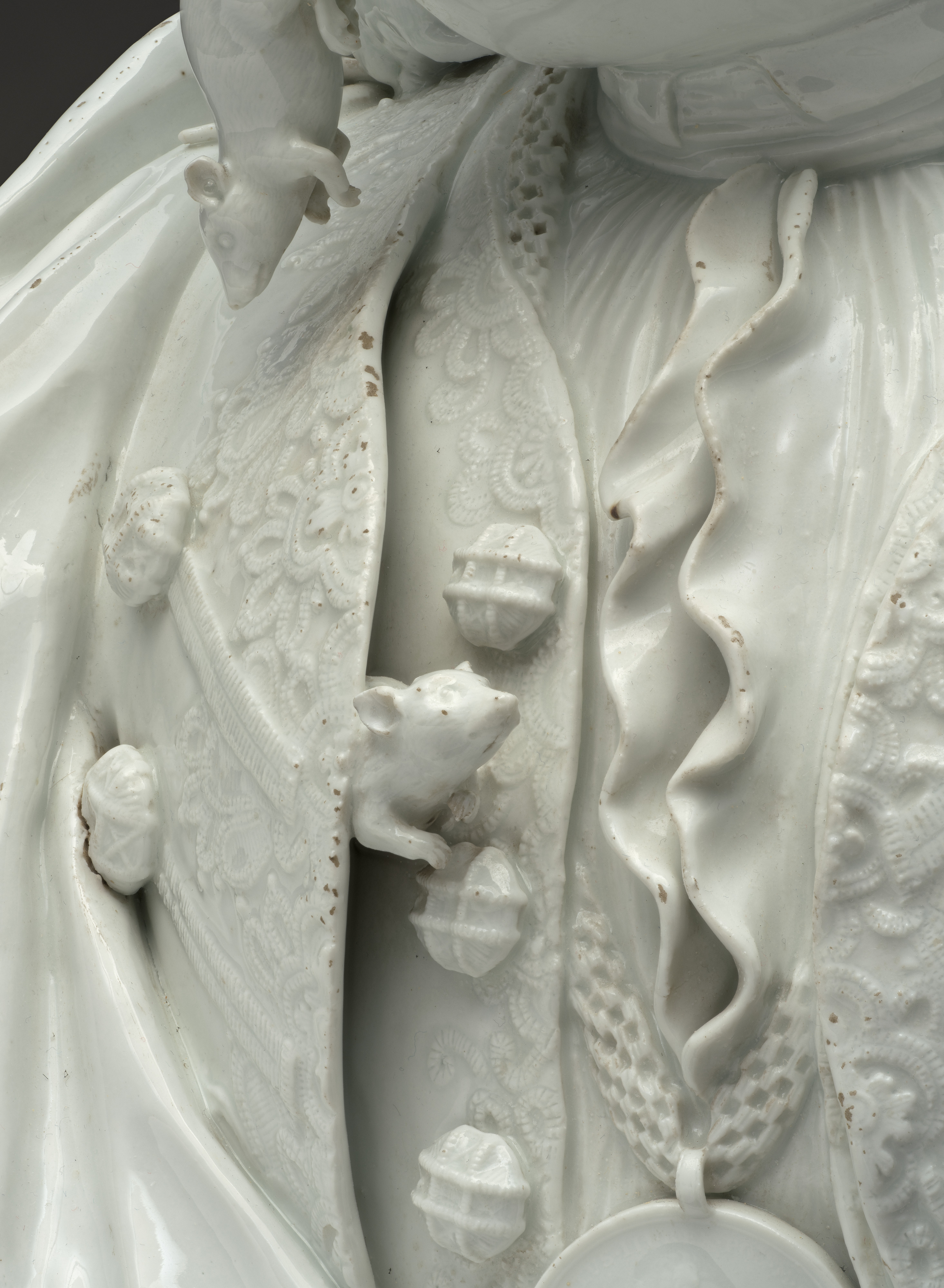Bust of "Baron" Schmiedel
Manufactory Meissen Manufactory German
Modeler Johann Joachim Kändler German
Captured in his comedic element, the elegantly coiffed Saxon court jester “Baron” Schmiedel is shown accompanied by a troupe of four mice, which often featured in his performances as a court entertainer. The bust was modeled by Johann Joachim Kändler and made at Meissen manufactory in 1739. Schmiedel, together with Joseph Fröhlich, the first court jester, were celebrated personalities at the courts of Augustus “the Strong” II, founder of Meissen manufactory, and his son, Augustus III. The porcelain bust of Schmiedel forms a stark contrast to classicizing depictions of powerful sovereigns, popes, and statesmen made by Meissen. This raises the question of why Augustus III chose to commemorate a fool whose main job it was to make people laugh. Jesters traditionally played an important role at the European courts. While their main purpose was to entertain the ruler, only fools at court had the power to tell the truth without fear of reprisals. This was not always the case. At times humor could be dangerous. Augustus II imprisoned Fröhlich after he had taken a joke too far. Escaping from jail, he was saved by a prank that he and Schmiedel pulled off, which succeeded in putting the king in a good humor once more.
Due to rights restrictions, this image cannot be enlarged, viewed at full screen, or downloaded.
This artwork is meant to be viewed from right to left. Scroll left to view more.
